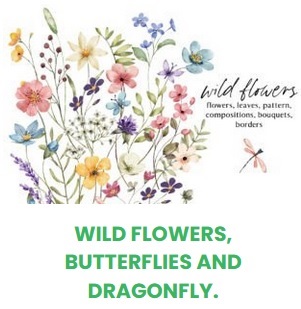In the enchanting world of butterflies, few species command as much admiration and fascination as the Emperor and Monarch butterflies. These majestic creatures, known for their vibrant colors and impressive migrations, have earned the title of "butterfly royalty" among nature enthusiasts and scientists alike. In this article, we will explore the unique features and remarkable characteristics of both the Emperor and Monarch butterflies, comparing their journeys, habitats, and significance in the natural world.
The Emperor Butterfly: Ruler of the Rain forest
The Emperor butterfly (Charaxes jasius) reigns over the lush rainforests of tropical regions, particularly in Africa and parts of Asia. Its regal appearance, with wings showcasing a striking combination of deep red, orange, and brown hues, has earned it the title of "Emperor" in the butterfly kingdom.
Habitat and Distribution: Emperors prefer densely forested areas with a rich variety of flowering plants. They can be found in regions such as sub-Saharan Africa, the Arabian Peninsula, and the Indian subcontinent.
Life Cycle: The Emperor butterfly undergoes a complete metamorphosis, just like other butterflies. The journey begins with the female laying eggs on the undersides of leaves. After hatching, the caterpillars feast on various plant species until they undergo pupation. The emerging adult butterflies then take flight, showcasing their mesmerizing colors and patterns.
Flight and Behavior: Emperors are skilled fliers, often gliding gracefully through the rain forest canopy. They have a slow and deliberate flight pattern, making them relatively easy to observe. These butterflies are known for their territorial behavior, defending their favorite spots from intruders with aerial displays and territorial dances.
The Monarch Butterfly: A Global Icon of Migration
The Monarch butterfly (Danaus plexippus) is undoubtedly one of the most celebrated butterflies in the world. Known for its annual migration across North America, the Monarch has become a symbol of beauty, perseverance, and conservation.
Habitat and Distribution: Monarchs are found throughout North America, from Canada to Mexico. They inhabit a variety of landscapes, from meadows and gardens to fields and coastal areas.
Life Cycle: Like the Emperor, Monarchs also go through a complete metamorphosis. Female Monarchs lay their eggs on milkweed plants, which serve as the sole food source for the caterpillars. Once the caterpillars go through several molts, they pupate and transform into the iconic adult butterflies with their distinctive black, orange, and white patterns.
Flight and Behavior: Monarchs are famous for their long-distance migration, which spans thousands of miles. Every fall, millions of Monarchs undertake a remarkable journey from Canada and the United States to overwintering sites in central Mexico or along the California coast. In the spring, a new generation of butterflies returns to continue this incredible migration.
Comparing the Royalty: Emperor vs. Monarch
While both the Emperor and Monarch butterflies share some similarities as charismatic and captivating species, they differ in several aspects.
Habitat and Distribution: The Emperor butterfly's preferred habitat is primarily limited to the tropical rain forests of Africa and Asia, whereas the Monarch's range covers a vast expanse, from Canada to Mexico and beyond.
Migration: While the Emperor butterfly may exhibit some localized movements, it does not undertake long-distance migrations like the Monarch. The Monarch's annual migration is truly a spectacle of nature, spanning several generations and covering thousands of miles.
Conservation Status: Both butterflies face challenges due to habitat loss and climate change, but the Monarch butterfly's migratory journey makes it particularly vulnerable to disruptions along its migration routes. Efforts to protect and conserve Monarch habitats and migration corridors have gained global attention.
Symbolism: The Monarch butterfly has become a symbol of hope and conservation, inspiring numerous initiatives to protect pollinators and their habitats. Its migration also carries cultural significance, with the overwintering sites in Mexico serving as important cultural sanctuaries.
In conclusion, the Emperor and Monarch butterflies are truly butterfly royalty, each captivating hearts with their beauty and unique characteristics. While the Emperor reigns over the tropical rain forests with its striking colors and territorial behavior, the Monarch's epic migration has made it a global icon of beauty and perseverance. Both species serve as reminders of the wonders of nature and the importance of conserving these delicate yet majestic creatures in our ever-changing world. As we admire their grace and resilience, let us also work together to protect and preserve their habitats, ensuring that butterfly royalty continues to enchant and inspire future generations.
- Adaptations and Survival Strategies of the Emperor Butterfly
- Butterfly Royalty: Comparing the Emperor with Other Monarch Butterflies
- Conservation Challenges for the Emperor Butterfly: Preserving a Regal Species
- Disclaimer
- Emperor Butterfly Videos
- Intriguing Insights into the Life Cycle of the Emperor Butterfly
- Migratory Wonders: The Fascinating Journey of the Emperor Butterfly
- Privacy Policy
- Terms Of Service
- The Circle of Life: Metamorphosis Unveiled
- The Emperor Butterfly: A Majestic Monarch of the Skies
- The Emperor's Habitat: Exploring the Butterfly's Preferred Environments
- The Myth and Symbolism of the Emperor Butterfly in Culture and Art

